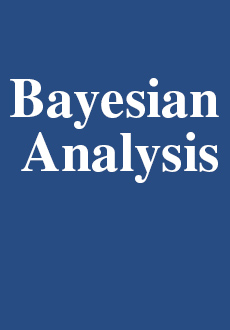Abstract
Objective priors have been used in Bayesian models for estimating the number of species in a population, but they have not been examined in depth. Here we derive the form of two objective priors, using Bernardo's reference method and Jeffreys' rule, based on the mixed-Poisson likelihood used in the single-abundance-sample species problem. These derivations are based on asymptotic results for estimates of integer-valued parameters. The factored form of these priors justifies the use of independent prior distributions for the parameter of interest (the number of species) and the nuisance parameters (of the stochastic abundance distribution). We find that the reference prior is preferable overall to the prior resulting from Jeffreys' rule. Although a comprehensive objective Bayesian approach can become analytically intractable for more complicated models, the essence of the approach can be upheld in practice. We analyze several datasets to show that the method can be implemented in practice and that it yields good results, comparable with current competing methods.
Citation
Kathryn Barger. John Bunge. "Objective Bayesian estimation for the number of species." Bayesian Anal. 5 (4) 765 - 785, December 2010. https://doi.org/10.1214/10-BA527
Information





